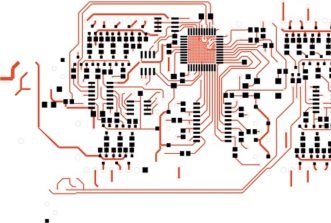This website uses cookies so that we can provide you with the best user experience possible. Cookie information is stored in your browser and performs functions such as recognising you when you return to our website and helping our team to understand which sections of the website you find most interesting and useful.
Qt Group speeds up defense UI development
Qt Group has introduced a new version of the Qt Framework, Qt for MOSA, which has successfully completed the Future Airborne Capability Environment (FACE) Certification process. This certification extends the advantages of advanced functionality and cost efficiencies to defense ground and air vehicle programs, similar to what Qt offers in cross-platform user interface (UI) development across various industries.
While numerous tools are available for constructing user interfaces in aerospace and defense devices with safety requirements, most of them rely on low-level custom code. The Qt FACE Conformant framework, Qt for MOSA, provides a comprehensive and streamlined solution that expedites development while ensuring advanced cross-platform functionality and compliance.
The FACE Technical Standard serves as an open standard aimed at simplifying the software computing environment for defense systems. Developed through collaboration among the FACE Consortium, the US and UK governments, and industry stakeholders, this standard mandates the creation of software components that are portable, interoperable, and reusable across different platforms and vendors. Leveraging its history of interoperability, the Qt Framework can now be utilized in developing component applications that integrate into complex composite systems like armored vehicles and airborne surveillance sensor suites.
Based on a modified version of Qt, the FACE Conformant framework offers an abstraction above the FACE Operating System Segment, which typically provides a limited set of low-level system and graphics calls. This framework facilitates the rapid development of screen-reliant software for drones, sensors, radars, and other systems by defense contractors. While safety-critical certification may not be mandatory, the framework equips these applications with complex and powerful display capabilities. The conformance package includes both the necessary code and an example application showcasing how Qt applications can be developed.
“FACE Conformance has expanded beyond airborne programs, yet there has been a gap in the market for powerful, visually rich UIs when safety-critical certification is not a prerequisite,” notes Juhapekka Niemi, Senior Vice President at Qt Group. “This is where Qt excels, offering the defense sector the benefits typically provided for embedded devices. Our track record of delivering tools that function across multiple platforms eliminates the need to start from scratch. The cost savings are vital for defense programs, and the improved efficiencies save time that can be allocated to enhancing UI features within budget constraints.”
The Qt Framework is already widely employed to enhance defense UI capabilities where FACE Conformance is not mandated, including applications in radar, electro-optical and infrared sensors, electronic warfare, drone control, vehicle instrument clusters, and more.
Ben Minichino, Business Development Director for Aerospace and Defense at Qt Group, emphasizes the versatility of the Qt Framework in creating advanced UIs beyond avionics-specific interfaces. “Consider displays for camera sensors, radar sensors for weather conditions or aircraft detection, drone and weapon system controls, or UIs that consolidate these systems and mission data. We aim to provide system builders and integrators with an unprecedented level of flexibility in these displays,” Minichino adds.














